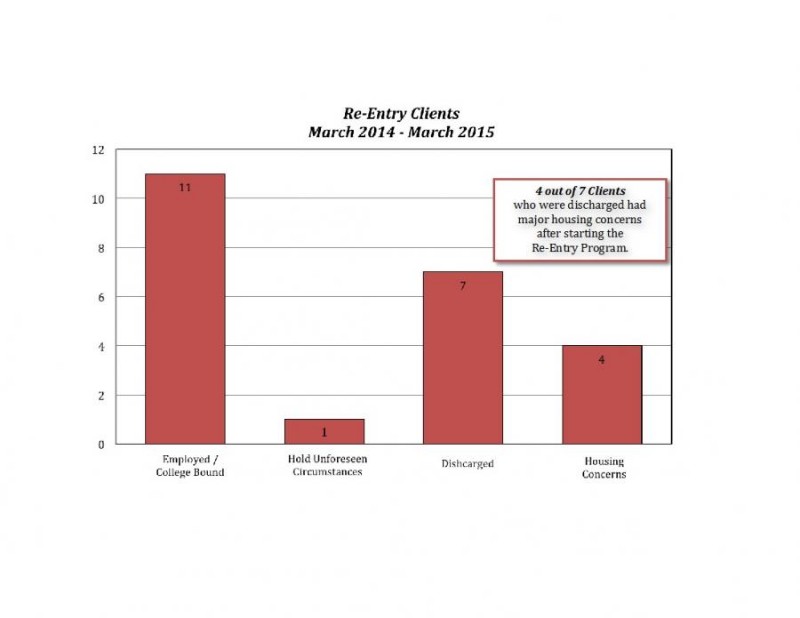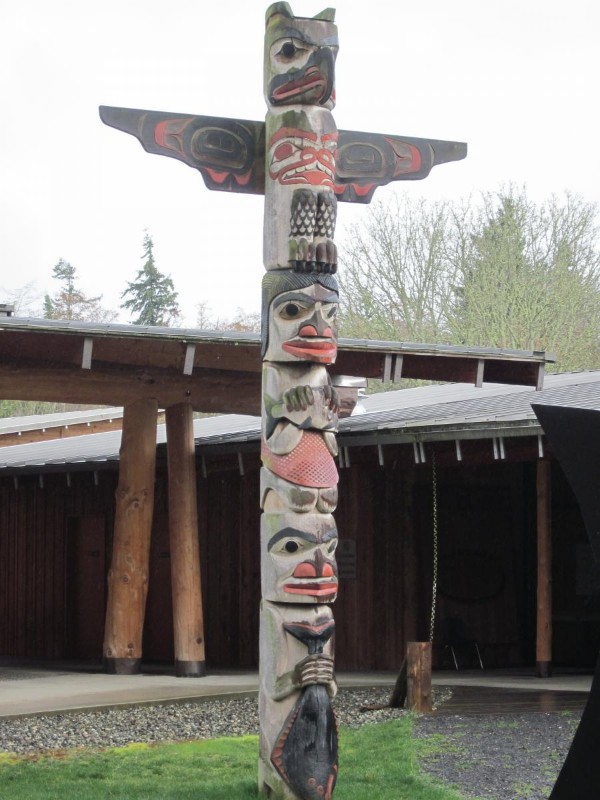
1304_calendar-image

PGST-Social-Services-sign

Picture1

Totem-outside-the-longhouse

Tribal-Council-Carving-PGST_0
Place Category: Specialized Court Projects
Summary: The Port Gamble S’Klallam, Re-Entry Program helps tribal members with criminal records overcome barriers to employment. Program staff begin by connecting clients to essential services. Clients who complete the initial program requirements are then eligible to receive paid job training with a local employer. The program continues to track clients for 3-6 months following placement to assist with sustained employment.
Program Running Length:
2013 – present
Contact:
PROGRAM CONTACT:
Janel McFeat, Program Manager
[email protected]
(360) 297-630531912 Little Boston Road NE
Kingston, WA 98346
United StatesLocation:
The Port Gamble S’Klallam Tribe’s 1,700-acre reservation is located in the northern part of Kitsap County, Washington, and its headquarters are in Kingston.
Land Characteristics:
The Port Gamble S’Klallam Reservation includes one contiguous area of federal trust land in addition to three adjacent smaller blocks of land that were purchased by the tribe. The reservation has over a mile of shoreline along Port Gamble Bay and several square miles of forested hills. The reservation also has three streams that flow through or originate on its land.
Population:
As of September 2012, there were 1,234 enrolled members of the Port Gamble S’Klallam Tribe, with over half of tribal members residing on the reservation and many others living nearby.
Tribal leaders were concerned that members with criminal records were prevented from gaining employment or pursuing higher education. Employers were reluctant to hire ex-offenders, and non-Native reentry programs did not adequately address the cultural needs of tribal members. The only tribal agency targeting this population was Tribal Probation, which offered community supervision but without any of the additional services clients needed to make meaningful progress.The Re-Entry Program serves any adult Port Gamble S’Klallam tribal member or community member with a criminal record.In 2012, the tribal court administrator, who also oversees probation, hired a probation officer to develop a tribal reentry initiative. Research revealed that case management, work readiness skills, and employment opportunities were instrumental to facilitating successful reentry into the community. In addition, probation staff made connections with employers on and off the reservation, who would provide on-the-job training and support to clients as they learn how to succeed in the workplace. The program began taking cases in 2013.The purpose of the program is to remove barriers to employment for tribal members who have a criminal history and to provide services to help them sustain gainful employment. Program staff work with clients to help them develop skills and secure gainful employment. This benefits the tribal member and the community at large. By using a strength-based approach, the program strives to help clients develop both personally and professionally and move beyond their criminal pasts.The Port Gamble S’Klallam Re-Entry Program is administered by the tribal probation department. The program begins with a client assessment—using the Correctional Assessment and Intervention System tool—to assess for both risk and need and develop a client-specific case plan. Each client is then linked with a range of employment services, including career counseling, resume and interview workshops, computer training, household budgeting, and other services. Clients may also be referred for additional services as needed, including Moral Reconation Therapy (MRT), treatment for chemical dependency and mental health, support groups, or educational classes. Clients are required to follow through with any program referrals. Clients are also required to submit to weekly drug screens, and comply with all probation mandates.
Clients who complete their employment services and other program requirements are eligible for up to six months of subsidized part-time employment—considered a training period—during which the program pays clients $400 every other week to pay for basic expenses (up to $5,000 total). Clients also receive a one-time payment to relieve “barriers to employment,” which they are expected to put toward obtaining a driver’s license, paying outstanding fines, and purchasing work uniforms.
While working in a subsidized position, clients are closely monitored with weekly reports, time sheets, and other supervision requirements. Program staff track clients’ progress and document any violations of program rules. After three violations, clients may be removed from the program. This approach provides employers with an incentive to hire ex-offenders. Moreover, it encourages employers to hire program participants at the end of the subsidized period, as these employees have already been trained and proven their commitment to the company.
The Re-Entry Program also has a cultural coach on staff, who offers classes on traditional ways, spiritual teachings, and family and community values. The cultural coach instructs clients on designing and making drums and drumsticks and using traditional beading techniques to make earrings. Clients can also learn to harvest cedar and gather and prepare traditional foods and plants for ceremonies.The Port Gamble S’Klallam Tribe’s Probation Department oversees the Re-Entry Program and employs a program manager, case manager, mental health counselor, educational instructor, and cultural coach to provide direct services to program participants.Eligibility Criteria
The program is open to any adult tribal member or community member with a criminal record. A client’s charges do not need to be recent in order to qualify.
Prior to placement in subsidized employment, clients must complete an 11-step job readiness process. Clients work one-on-one with the reentry case manager to:
- Complete a resume workshop
- Complete an interview workshop
- Pass regular drug screening
- Search for jobs once per week
- Work toward a General Educational Development certificate or Associate’s Degree if not yet obtained
- Take a career aptitude test followed by career counseling
- Provide proof of attendance at mental health treatment or chemical dependency treatment (if applicable)
- Attend basic Microsoft Word and Excel computer classes sponsored by the Northwest Indian College (NWIC)
- Create a basic household budget that includes a plan to pay off debt, restitution, fines, etc.
- Be supervised by a case manager
- Complete a background check
Completing these steps usually takes one to three months, and clients must complete the steps in order to demonstrate that they are dedicated to reentering the community and becoming gainfully employed. Once completed, clients work with their case manager to arrange placement in a subsidized job that matches their career goals and is appropriate given their criminal history.
Supervision and Compliance
Clients are required to check in twice each week with their case manager. In addition, clients must be in full compliance with the program in order to receive their bi-weekly stipend. Both the partnering employer and the client sign an agreement prior to starting the subsidized job. The employer submits monthly performance reports to the case manager to track compliance.Termination Criteria
Four violations result in termination from the program. Violations include testing positive for a banned substance, being late or absent without an excuse, or failing to address behavioral issues.The Re-Entry Program is funded in large part through the U.S. Department of the Interior’s 477 Program, a federal initiative that supports employment, education, and training. The 477 Program created a single pool of funds, drawn from various federal funding streams, in efforts to simplify funding and reporting requirements for tribal nations and thereby reduce administrative burdens. Additionally, the Re-Entry Program has received $100,000 in funding from tribal council, which is used in part to cover the cost of the client stipends. A portion of the coordinator’s salary is currently paid by a Tribal Courts Assistance Program grant from the Bureau of Justice Assistance.The Re-Entry Program partners with several local businesses on and off the reservation to offer participants subsidized job placements, as well as resume and interview workshops. Some businesses match subsidized job training with 20 hours of company-paid training, and a handful of partners have hired program graduates for permanent positions.Several tribal government entities also serve as important partners, including Children and Family Services, Elders Program, Family Preservation Services, Education Department, Head Start, Youth Services, and the Clothing and Food Bank. These partners help to ensure participants have access to necessary services.The Re-Entry Program is effective in part because the Port Gamble S’Klallam Tribe is a close-knit community with several tribal partners willing to support the program and help fellow tribal members.Currently, the program’s biggest challenges are securing reliable, affordable transportation and housing for clients. Public transportation is very limited in the area. Case managers will sometimes assist with client transportation, but they do not want to encourage clients to rely solely on program staff. Limited housing remains a major problem.Program staff found that employers were much more interested in participating when the Re-Entry Program started providing subsidized job training. This approach enabled employers to offer training opportunities to individuals with criminal records without incurring financial risk. The clients gained valuable employment experience and in some cases were offered long-term employment. Employers also reported that they appreciate the program’s close monitoring of clients during their placement. Employers interested in hiring participants benefited from the program’s structure, monitoring, and case-management, which allowed employers to build relationships with participants and evaluate job performance before offering positions.The program served 19 clients in 2013 and 18 clients in 2014, and maintained a waiting list of 38 eligible individuals. The program deliberately maintains a small caseload in order to ensure quality services.By September of 2013, three clients had acquired full-time jobs (16%), three more were lined up for full-time jobs (16%), an additional three (16%) were registered to begin college, and four had dropped out entirely (although one was eventually allowed back in). The remaining clients were actively searching for employment and engaged in services. By the end of 2013, the program reported a 77% full-time job placement rate, though the program acknowledges that this rate seems unusually high and attributes it, in part, to a large number of participants with low to moderate level crimes on their records. In 2014, 58% of program participants received full time employment. These full-time placements are separate from subsidized job training placements.As a testament to its success, the program has been able to engage in job development with both tribal and non-tribal businesses, and several have agreed to make permanent hires.
Furthermore, the program helped to facilitate important changes in hiring practices for positions within tribal departments. During the planning of the Re-Entry Program, a tribal government policy disqualified potential job applicants if they had criminal records. Working closely with the Tribal Human Resources Department, the Re-Entry Program was able to secure an exception for program participants. In return, the reentry case manager provides strict compliance monitoring for participants at all steps in the program.
Upon program completion, the coordinator provides graduates with a letter attesting to their success in the program, and clients attach the letter to tribal job applications. This ensures that applicants are not disqualified from tribal employment due to their criminal records and are instead identified as having completed the rigorous program.





